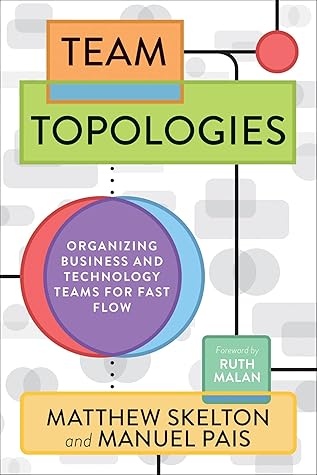More on this book
Community
Kindle Notes & Highlights
Read between
September 28 - December 18, 2022
complicated-subsystem team is created only when a subsystem needs mostly specialized knowledge. The decision is driven by team cognitive load, not by a perceived opportunity to share the component.
What kind of behaviors and outcomes do we expect to see in an effective complicated-subsystem team?
A digital platform is a foundation of self-service APIs, tools, services, knowledge and support which are arranged as a compelling internal product. Autonomous delivery teams can make use of the platform to deliver product features at a higher pace, with reduced coordination.12
“Ease of use” is fundamental for platform adoption and reflects the fact that platform teams must treat the services they offer as products that are reliable, usable, and fit for purpose, regardless of if they are consumed by internal or external customers.
“premium level” services (e.g., zero downtime of the service, auto scaling, self-recovery in case of failure),
Don Reinertsen recommends using internal pricing (for infrastructure and services) to regulate demand, helping to avoid everyone asking for premium level.15 An example could be tracking cloud-infrastructure costs by team or service.
What kind of behaviors and outcomes do we expect to see in an effective platform team?
However, the streams to which platform teams align are different from the streams for teams building the main (revenue-generating or customer-facing) products and services.
This “nested” approach is similar to the “layered Ops” approach outlined by veteran technologist James Urquhart, based on his experience at Sun Microsystems and Cisco.
To make things worse, before 2013 new software-development projects were financed with capital expenditure (CapEx) but the IT operations activities were treated as operational expenditure (OpEx,) which produced a sharp divide between teams building things and teams running things. Software development (Dev) time was booked 90% to CapEx; effectively, they were told, “You must build new things.” They could not work on fixes or things that were right for the customer. Dev was working to serve the “boss” of product management rather than users of the services. We knew we had to change this.
We don’t have any “DevOps” people; instead, we have experienced operations engineers who do in-depth analysis of live service problems. This means that our focus in the infrastructure area is on the flow of work for Dev teams and how application and infrastructure changes affect customers.
Instead, we have an Ops “squad buddy” for each Dev squad, a person from Ops who regularly works with specific Dev squads, attending their standups and providing the “glue” between Dev and Ops.
Since 2013, we have had no concept of an IT department within Auto Trader: product and technology are the same department, the same big team.
Keeping things simple with cross-functional teams. The use of cross-functional, stream-aligned teams has a very useful side effect. Precisely because stream-aligned teams are composed of people with various skills, there is a strong drive to find the simplest, most user-friendly solution in any given situation. Solutions that require deep expertise in one area are likely to lose against simpler, easier-to-comprehend solutions that work for all members of the stream-aligned team.
good platform provides standards, templates, APIs, and well-proven best practices for Dev teams to use to innovate rapidly and effectively.
In all cases, we should aim for a thinnest viable platform (TVP) and avoid letting the platform dominate the discourse. As Allan Kelly says, “software developers love building platforms and, without strong product management input, will create a bigger platform than needed.”
“The most important part of the platform is that it is built for developers.”
we need to: (1) treat the platform as a live/production system, with any downtime planned and managed, and (2) use software-product-management and service-management techniques.
Crucially, the evolution of the platform “product” is not simply driven by feature requests from Dev teams; instead, it is curated and carefully shaped to meet their needs in the longer term.
The change from infrastructure team to platform team is not simple or straightforward, because a platform is managed as a product using proven software development techniques that may be quite unfamiliar to infrastructure people.
For organizations that are successful at delivering software rapidly and safely, most teams are stream aligned, with only around one in seven to one in ten teams not stream aligned. That is, based on what successful organizations report, the ratio of stream-aligned teams to other kinds of teams should be between about 6:1 and 9:1.
The model for IT support that consistently seems to work best has two aspects: (1) support teams aligned to the stream of changes, and (2) dynamic cross-team activity to resolve live service incidents.
A crucial role of a part-time, architecture-focused enabling team is to discover effective APIs between teams and shape the team-to-team interactions with Conway’s law in mind.
This means that the majority of teams need to be loosely coupled, aligned to the flow of change (the “stream”), and capable of delivering a useful increment in the product, service, or user experience for which they are responsible.
Helping stream-aligned teams achieve this high rate of flow are enabling teams (which identify impediments and cross-team challenges, and simplify the adoption of new approaches), complicated-subsystem teams (if needed, to bring deep specialist expertise to specific parts of the system), and platform teams (which provide the underlying “substrate” on which stream-aligned teams can build and support software products and services with minimal friction).


